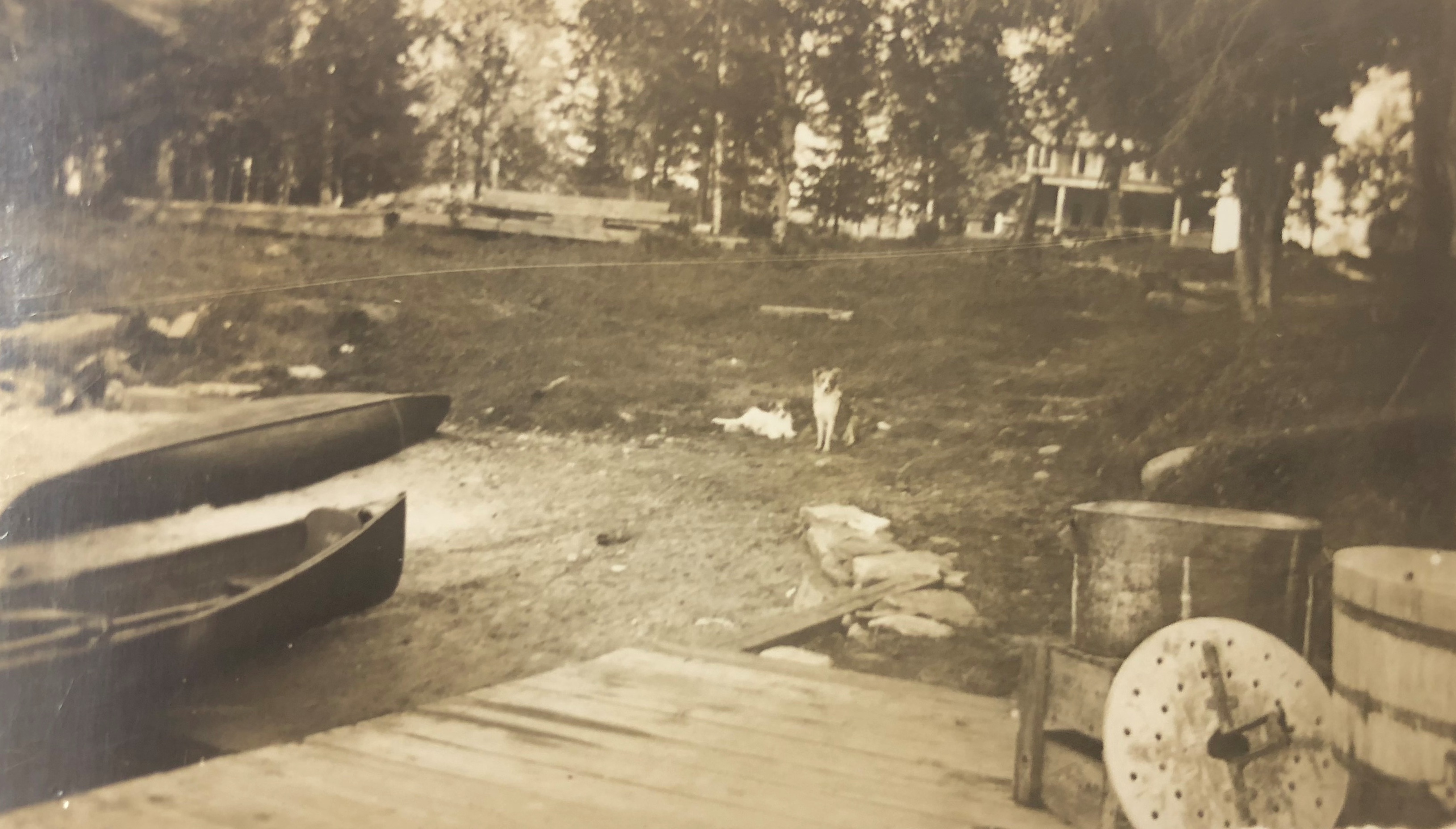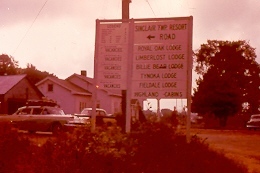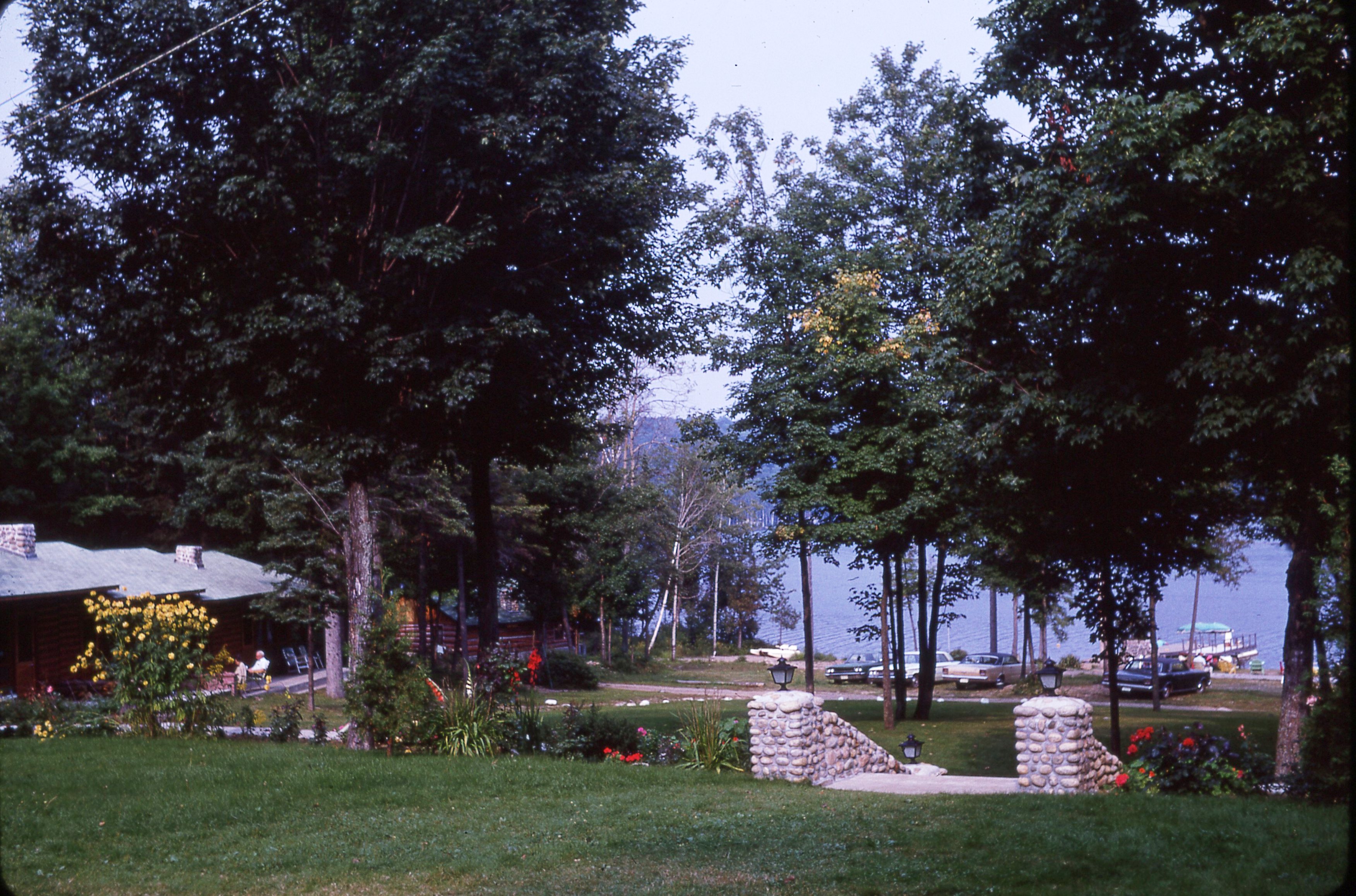The “Lake of Bays District”
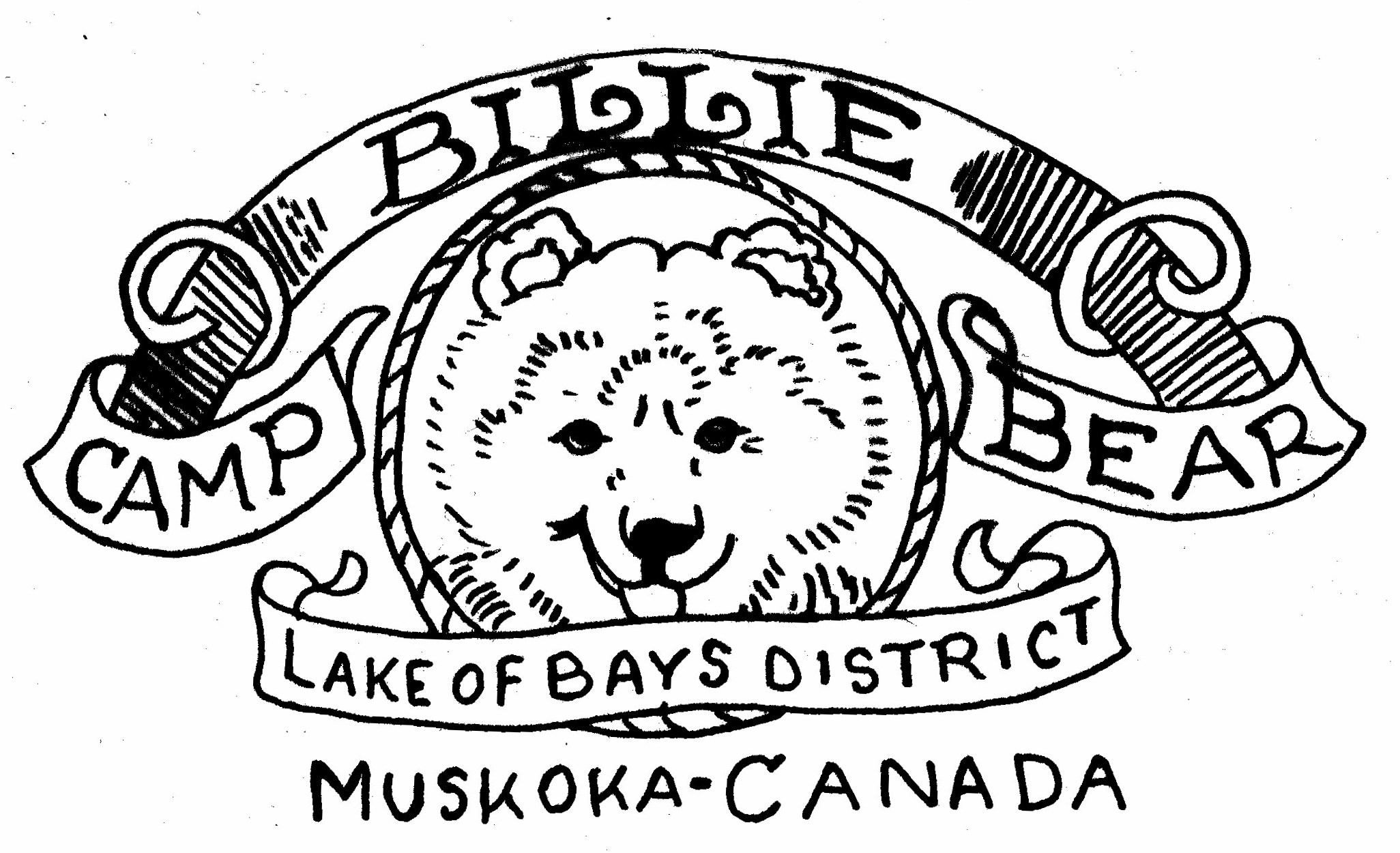 |
|
An early logo for Camp Billie Bear invoked the cachet of the Lake of Bays District (Billie Bear Archives)
|
Tourist development was slower to arrive in northern Muskoka, and especially the more isolated lakes of Sinclair, than around the more easily reached lakes to the south of the district. Although the steamship Northern had provided navigation on Mary, Fairy, and Vernon Lakes since 1877, giving access from Port Sydney, rail passenger service did not reach Huntsville until 1886. Two years later, dredging of a creek opened Peninsula Lake to steam navigation, and the Huntsville and Lake of Bays Navigation Company soon had several steamers plying the lakes. A wagon service over the portage allowed passengers to connect to steamships operating out of Baysville on Lake of Bays. When the Portage Railway finally opened in 1904, travel from Huntsville to the growing number of tourist houses and hotels on Lake of Bays became a more feasible, if multi-stage, journey.
Over the decades from steam to the proliferation of motor traffic, tension persisted between the tourist operators and merchants of north and south Muskoka: Huntsville complained that train service and advertising tended to neglect anything north of Gravenhurst; Bracebridge, near the road to Baysville, quarrelled with Huntsville over which town was, in fact, the “Gateway to the Lake of Bays.”
The “Lake of Bays District,” which in the Navigation Company’s terms included the chain of lakes as well as Lake of Bays itself, had indeed quickly developed a cachet for remoteness, beauty, and serenity. One correspondent in 1906, while deploring facilities in Huntsville and the “rough” tourist society he encountered, wrote of the district: “The lakes are higher and the air much more invigorating; the trees are larger, the scenery more romantic, and the water better stocked with fish.” Advertising booklets from as early as 1912 described the district’s beauty and its tourist houses and hotels. Lake of Bays District was soon solidly on the map as a desirable destination, but the opening in 1920 of Bigwin Inn, a grand hotel to rival any on the south Muskoka lakes, put the jewel in its crown. “Not very many years ago Lake of Bays was almost unheard of as a tourist region,” wrote the Huntsville Forester in 1923. “Year by year however the tourist traffic has been growing until it is now estimated that there are in the neighbourhood of 7 or 8,000 people enjoying Muskoka’s invigorating air and scenery in the Lake of Bays District.”
 |
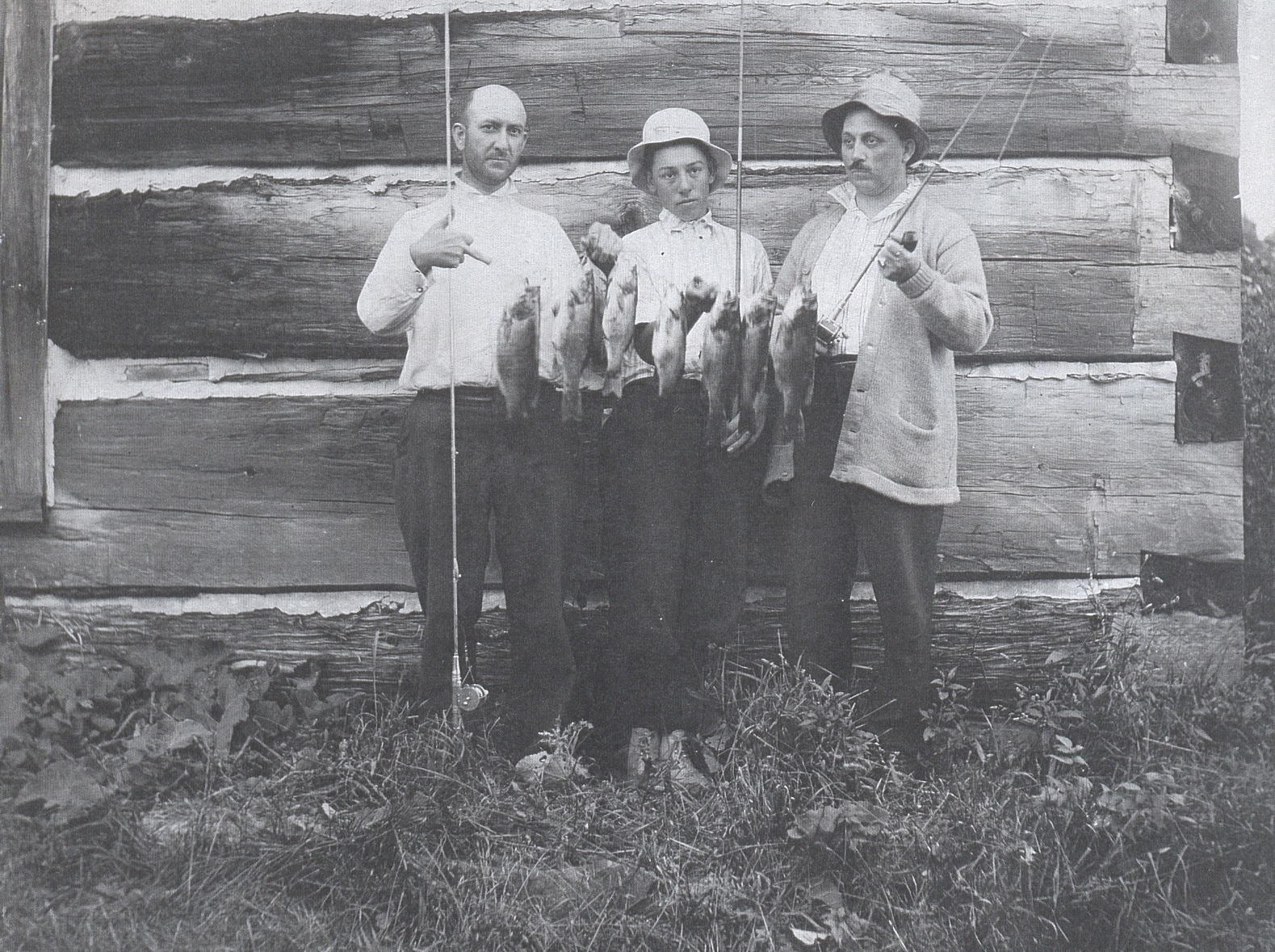 |
American guests roughing it and displaying their catch at Camp Billie Bear, 1916. Fishing was the main draw for early summer visitors to Sinclair Township, but guests were often surprised by the comfort they found in the “wilderness,” especially at Limberlost Lodge. (Barbara Paterson Collection, album from “Dr. and Mrs. Deitzel”)
Tourist Houses in Sinclair
The smaller lakes in Sinclair profited from Lake of Bays’ reputation. Hunting and fishing parties had visited settlers’ homesteads and camps on Bella and Rebecca Lakes since the 1890s. Rebecca in particular had become a frequent destination for Huntsville residents and other visitors by the time Camp Billie Bear on Bella Lake was starting to accept regular fishing party guests in 1906. “Lake of Bays District” featured in its advertising, although camp amenities remained rustic. In 1921, as roads into the township began to make automobile travel possible, Gordon Hill set out to create a well-appointed lodge, Limberlost, on isolated Clear Lake (Lake Solitaire) that could compare with many of the established and gracious hotels on the lakes served by the Navigation Company. From the start his creative and energetic ideas gave Limberlost an iconic standing that soon pushed beyond the traditional summer holiday to popularize winter sport, especially skiing. Oxbow Lodge on Oxbow Lake and Royal Oak Lodge on Walker Lake, both established on land grant homesteads, the latter built by descendants of settler Robert Walker, also opened in the 1920s. While these lodges were reasonably accessible from the Sinclair-Finlayson (Syndicate) road, Camp Billie Bear still relied on water access from Kells Landing on Rebecca Lake, reached either from Grassmere (steamer wharf on Peninsula Lake) or by road from Huntsville.
The affordability and popularity of automobile travel through the 1920s began to favour camping and more remote destinations – if they were accessible by road. One track off the Sinclair-Finlayson road went as far as Tynoka, on the south shore of Bella Lake in the 1930s; it was extended between the lakes to reach Fieldale Lodge, also established in the 1930s, on the north shore of Rebecca. The Billie Bear Road, following a stretch of the old Bobcaygeon survey line, became guests’ regular route, despite their harrowing tales of the journey, to Camp Billie Bear, by that time a well-known cabin resort. Tynoka, originally a fishing and summer camp, soon offered more elegant accommodation; both Fieldale Lodge and Camp Billie Bear became centres for cottagers who were beginning to locate on the lakeshores.
Sources:
Billie Bear Archive, Brochure Collection; Document Collection, “Random Notes about Billie Bear” by Gertrude L. Davis; Document Collection, Letter to Barbara Paterson from Gerry Livingston, August 1982.
Burgess, David, “Fieldale Road” (Presentation at Lake of Bays Library, Dwight, October 2013).
Huntsville Forester, “Northern Muskoka Lakes,” July 26, 1906, p. 4; “The Week’s Doings in Huntsville,” May 22, 1913, p. 4; “Board of Trade Booklet,” June 1,1916, p. 1; “Bigwin Inn Booklet Out,” March 18, 1920, p. 1; “Limberlost Open Again,” October 13, 1921, p. 1; “Many Tourists in Lake of Bays District This Year,” July 26, 1923, p. 8; “All Lake of Bays Preparing for the Summer Rush,” May 22, 1924, p. 1; “Neat Booklets Issued,” June 3, 1926, p. 1; “Heavy Motor Traffic,” August 16, 1928, p. 1; “New Welcome Arch Opened” July 7, 1932, p. 1, and follow-up articles during July 1932 regarding Huntsville as Gateway to Lake of Bays; “Muskoka District Tourist Development Association Meeting Held at Gravenhurst, Friday Last,” March 9, 1939, p. 1.
Pryke, Susan, Huntsville: With Spirit and Resolve (Huntsville: Fox Meadow Creations for Heritage Huntsville, 2000).
|
||




